The Little Cooper That Could
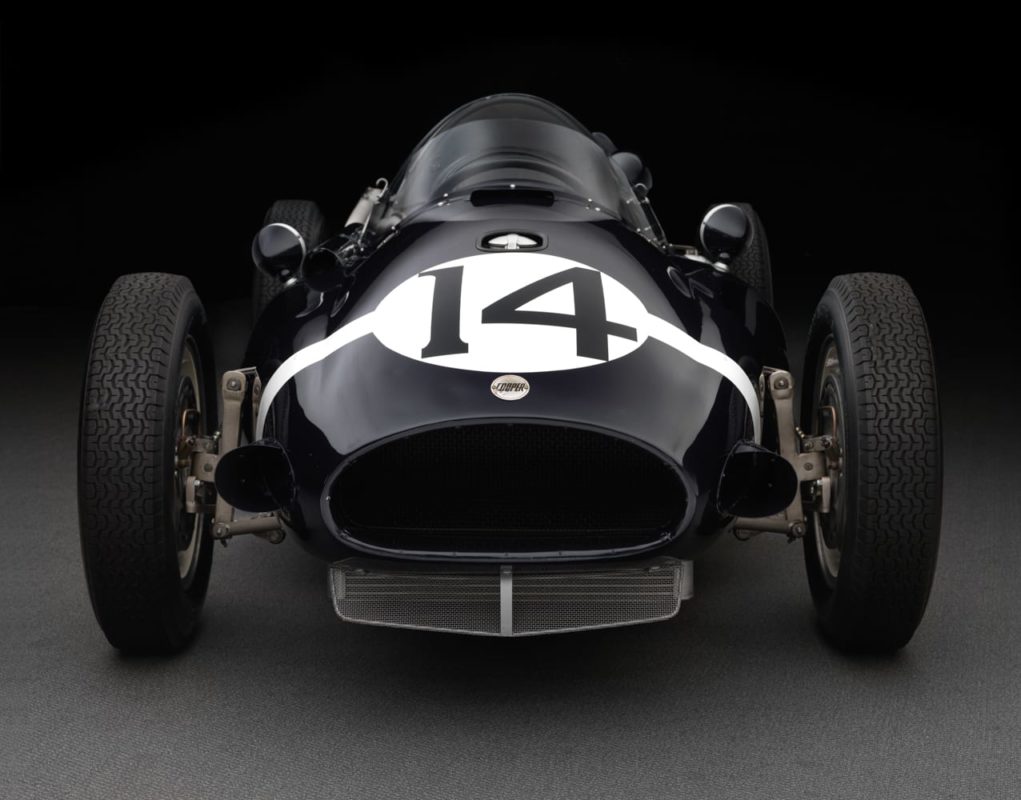
By John Lamm
It was 1958, time for new rules and changes in Formula 1. Alcohol fuel was out in favor of aviation gas. Race distances were cut from 500 kilometers (or three hours, whichever was shorter), to 300 kilometers or two hours. The FIA had slipped the Argentine Grand Prix in for Jan. 19. Ferrari and Maserati would be there in full force, but Vanwall and BRM opted out, working to convert their engines to the new fuel.
So Stirling Moss, signed with Vanwall, apparently wouldn’t race in Argentina. Then, independent team owner Rob Walker offered Moss his small 1957 Formula 2-based Cooper-Climax Type 43 — a race car that now resides in the Miles Collier Collections at Revs Institute and will be at this weekend’s Goodwood Festival of Speed.
Vanwall agreed to let their driver race for Walker. Moss, who told the story to Doug Nye, takes the narrative from here:
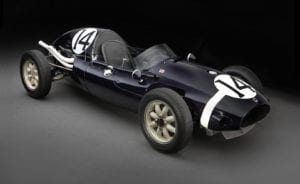
“I jumped at the chance to drive Rob’s little Cooper-Climax, and found the car just as easy to drive as my previous line of rear-engined 500-cc Formula 3 Coopers. It really could be thrown around very confidently. Although it obviously felt very small and at first a little strange to be sitting so close to the front wheels, I was never bothered by suddenly finding myself seated some eight inches closer to the road than in my lofty front-engined, teardrop-bodied Vanwall.”
(His description of the big front-engine Vanwall applied to the Ferrari Dinos and Maserati 250Fs as well.)
Moss continued, “I never really dreamed that the 1.96-liter Cooper would be competitive against the new 2.4-liter V-6 Ferraris, but at least I had a drive, and that was the main thing. I hated the thought of missing even one race.
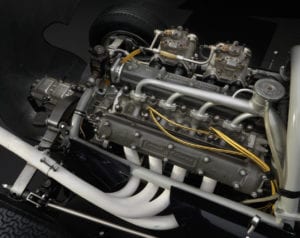
“Rob’s little Cooper-Climax was powered by a 1,960-cc version of the normal 1.5-liter Formula 2 Climax four-cylinder twin-cam engine. It produced about 165 horsepower at 6,500 rpm. This was, in fact, less than I had the last time I had driven a Cooper in a grand prix, at Monza nearly five years earlier.
“After first practice, my diary reads ‘Cooper feels fast but road-holding only fair, particularly on fast corners.’ After second practice and some work by Alf and Tim [mechanics Alf Francis and Tim Wall]; ‘Car better-handling when full of fuel, tyre wear seems excellent! [Juan Manuel] Fangio 1:43, SM 1:44, [Luigi] Musso 1:46…’ Fuel economy was so good that we quietly planned to run the entire race nonstop.”
There were problems. A gearbox drain plug fell out, causing concern. Moss’ wife, Katie, accidently poked him in the eye, “…and scraped 4mm off my cornea.”
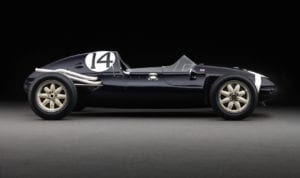
Tires were a worry, too. “Rob’s team had previously found the latest Continental racing tires to be very good,” Moss said, “so we were using them on the Cooper. We put 4.50 section tires on the front instead of 5.00s, which improved the handling, but we were told the German tires would not last more than 30 to 40 laps, while the race was over 80. The Cooper wheels were retained by four studs instead of quick-change center-lock knock-offs, so any tire change would have been a fatal handicap, possibly costing us two minutes or more.
“The race began late that afternoon once the midday heat had passed. The eye felt better. I started quite well, fourth behind the Maseratis of Fangio and [Jean] Behra and [Mike] Hawthorn’s V-6 Ferrari, and then took third. But on lap four, I struck trouble.
“The gearbox was rigged with a clutch-interlock mechanism, which had been introduced to stop it jumping out of gear. Far from jumping out of gear, I now had the thing jam in second!”
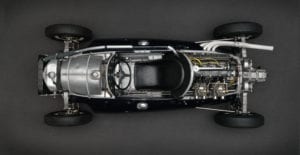
Some very good Moss luck resolved the problem, but the hassle cost him 15 seconds. As the big cars stopped for fuel, Moss moved to the front. “To lull the opposition, Alf and Tim in the pits then made a great display of preparing fresh tires for me. But, of course, to stop would have killed any chance we might have had of winning. Which is exactly what we wanted the Maserati and Ferrari team people to believe…
“Ever since half-distance I had been watching my front tires closely, and also studying my rears in the mirrors and occasionally craning round for a proper look when I had the chance. I knew what I was watching for, and with about 14 laps to go, I saw it.
“A little white spot began flicking round the left-rear tire. It showed where the tread had worn through, and the white breaker-strip between tread and carcass had been exposed. The other tire soon began going, too. These spots flicking round the tires began to become longer and longer. They became a continuous line. And then the line began to broaden into an undulating band, which now darkened as the casing proper was exposed. Then the bands became indistinct, looking fuzzy as the tortured carcass began the first stage of shredding by throwing out tiny hairs of textile…
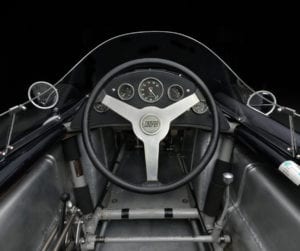
“Alf and Tim in the pits signaled me that Musso was closing fast. I slowed and slowed, balancing my lead against my tires’ increasingly desperate state. Oil and water gauges were reading OK. I was still pulling 7,000 rpm along the straights, tensed for a tire burst all the time. I lapped in 1:42.8, which I knew I could have lowered by another second if only I had some rubber on my tires.
“Now I was actively seeking out the oily, slippery bits of road to mollycoddle my tires. I kept off anything abrasive where adhesion — and wear — might be high. I got it just about right, whereas Musso had begun his charge too late. I won by 27 seconds from Luigi’s new Ferrari, with Mike Hawthorn third in his.
“This was quite staggering. I could scarcely believe it! We had beaten those powerful new 2.4-liter Ferraris with a little 1.96-liter special which had survived no fewer than 80 laps without a tire change, with its clutch inoperative, and after hardly any special preparation.”
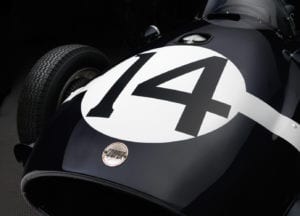
The opposition had trouble believing it, too. Phil Hill reported the Ferrari team manager couldn’t conceive that “his masterpieces had been beaten by this horrible iddy-biddy thing with its engine in the wrong end.”
It was the start of a revolution, the first Formula 1 win by a rear-engine car and by a Cooper. Moss said, “As a very proud Brit, I was thrilled to be waving the flag like this.”
And Revs will be proud to wave the flag for Sir Stirling Moss’ Argentine Grand Prix-winning Cooper-Climax as it rushes up the hill at this year’s Goodwood Festival of Speed.

